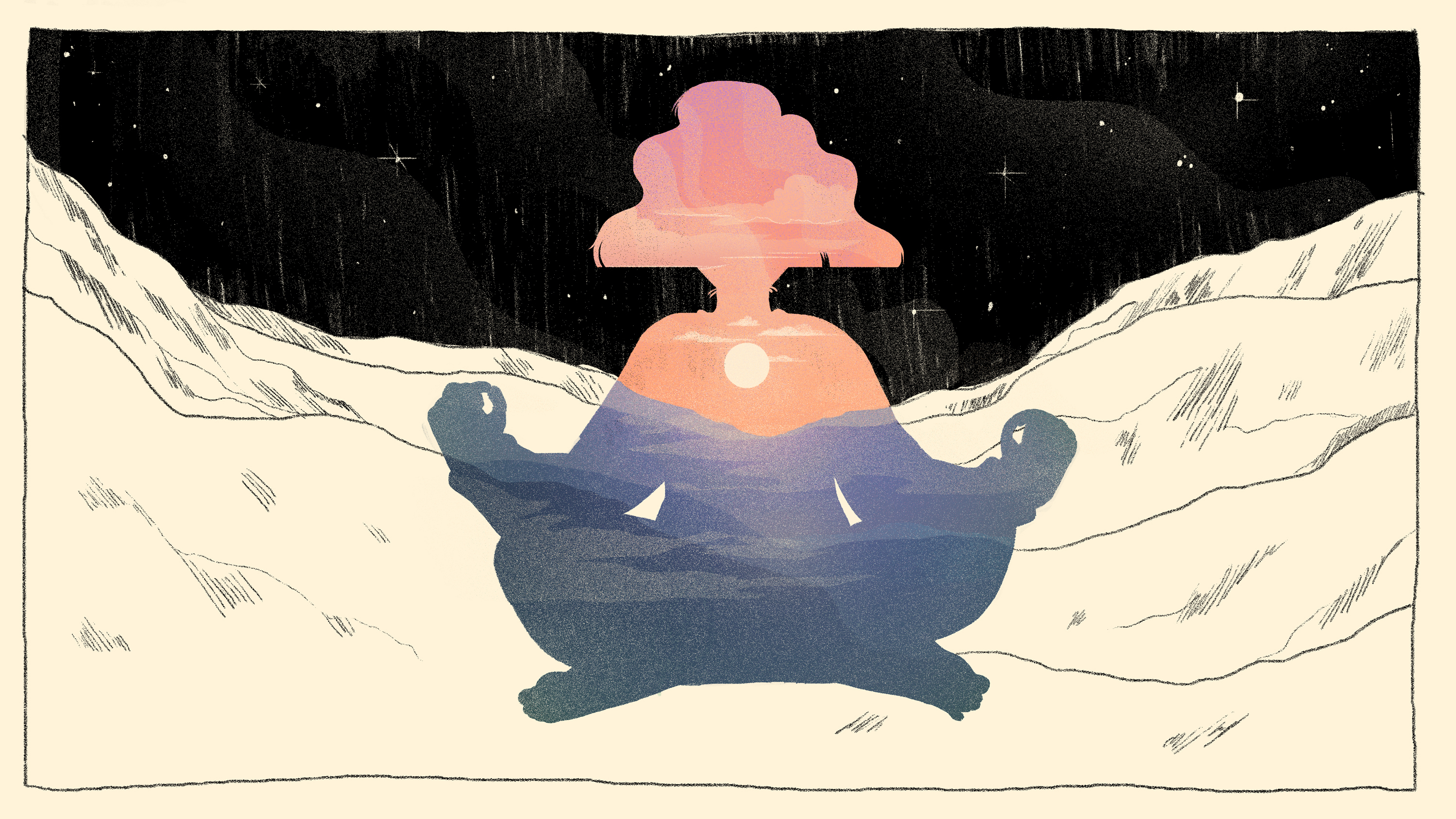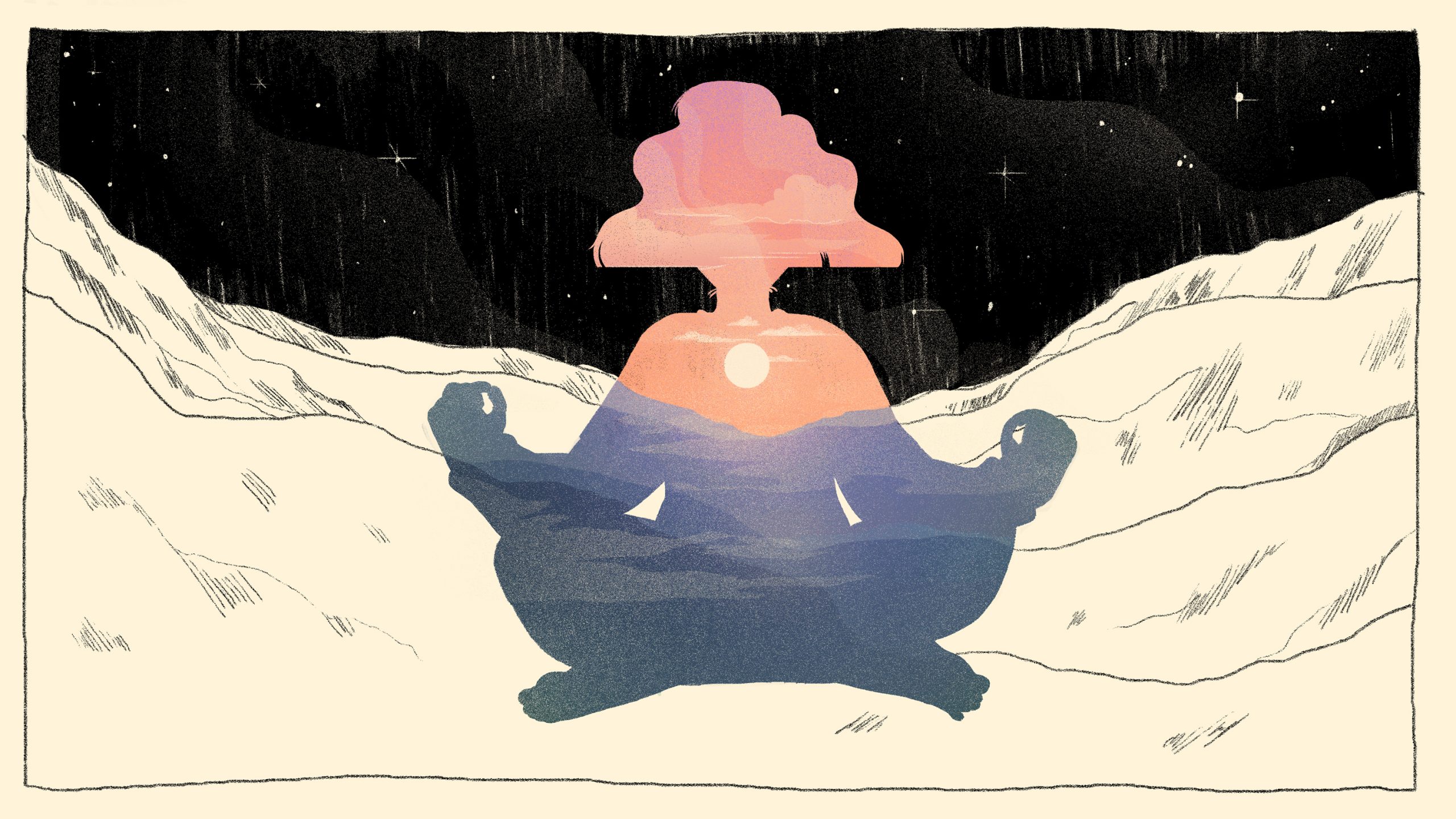
# Uncover the Freedom That’s Always Present
Envision, for a moment, a reality where you aren’t trying to control anything. There’s no need to wrestle with concentration, no contention with thoughts or incessant inner dialogues. Instead, see yourself simply existing — profoundly aware, completely alive, and engaged in the now. The distinctions between striving and existing fade away, and suddenly, you’re revealing something that has always been there: an intrinsic freedom that lies beyond the clamor.
## The Path to Unveil What’s Always Been There
This is not just about conventional mindfulness — anchoring yourself in every moment. It’s about something more profound, revealing an unshakeable aspect of yourself that has always accompanied you.
### What If Mindfulness Emerges Without Effort?
Mindfulness, in its deepest essence, may not necessitate exertion. We typically link focus to effort: warding off distractions, putting in the work to uphold attention, or compelling ourselves to be present. But what if the truth lies in recognizing that effort isn’t the key? It’s not about piling more onto your life, but rather, peeling away the layers of stress, anxiety, expectations, and habits to uncover the “you” that has always resided beneath.
Imagine the profound relief associated with this understanding. There are no “shoulds.” You don’t need to control or grapple with your experiences. Rather, mindfulness encourages a return to what is already liberated, authentic, and beautiful, eager to be unearthed within you.
## What Constitutes the Fundamental Ground of Mindfulness?
Within Tibetan Buddhism’s Dzogchen tradition, the concept of a “primordial ground” exists — a constantly available state of pure awareness. Unlike methods that emphasize gradual improvement or achieving enlightenment incrementally, Dzogchen reveals that pure awareness is perpetually present, underlying thoughts and feelings.
### The Primordial Ground Is Recognized, Not Attained
This realm of awareness isn’t something we need to strive for or fabricate. The practice revolves around recognizing that it has always existed, waiting for our acknowledgment.
Dzogchen, or the “Great Perfection,” illustrates that this state of wholeness transcends dualistic distinctions of good and bad. It’s not an elusive or extraordinary state; it is the very essence of consciousness, similar to how the sky remains constant despite clouds drifting across it.
#### The Primordial Ground Resembles a Mirror
Chogyal Namkhai Norbu, a luminary in the Dzogchen lineage, compared the primordial ground to a mirror. The mirror reflects all without being altered by what it reflects. Likewise, this awareness encompasses all experiences without being affected by them. Picture the expansive sky, unchanging even as clouds move across it. The primordial ground of mindfulness stands as the unconditioned, always-present awareness that lies beneath all experiences and emotions — stable, untouched, and enduring.
### Unveiling the Three Dimensions of Primordial Awareness
Dzogchen articulates three crucial qualities of this ever-present awareness:
1. **Essence**: Pure, unaltered, akin to the clear sky.
2. **Nature**: Radiant, perpetually aware, responsible for experience and understanding.
3. **Compassion**: The spontaneous, responsive outflow of awareness engaging with the world openly.
As we connect with this core, we transcend our thoughts and identities, transitioning from striving to simply being.
## Mindfulness Practices to Link with the Primordial Ground
How can we nurture this link to our primordial awareness? Dzogchen employs mindfulness as a portal — not just for present awareness but to unearth the essence of who we genuinely are. These practices focus not on achieving something new, but on dismantling what obstructs what has always been true.
### Mindfulness of Body: Grounding in the Now
One method to tap into this awareness is by anchoring yourself in bodily sensations.
* **Concentrate on Sensation and Breath**:
Close your eyes for a moment, inhale deeply, and become aware of the sensations of air nourishing your lungs. What if these simple experiences could connect you to a deeper awareness? This bodily awareness serves as a stabilizing presence, reminding you of the unwavering ground beneath the constantly shifting surfaces of existence.
* **Stability and Insight**:
As you immerse yourself in bodily awareness, you may perceive an underlying steadiness — a realization that something remains unwavering regardless of the fluctuations in your thoughts, feelings, or situations.
### Discerning Truth from Illusion: Liberation from Thought
Dzogchen motivates us to break free from the illusions created by transient thoughts. Observe how your thoughts, much like clouds, appear and disappear. By dissociating your identity from the tumult of thoughts and emotions, you begin to liberate yourself from their hold.
* **Noticing Thoughts and Emotions**:
Rather than viewing emotions or thoughts as integral parts of yourself, practice observing them as fleeting phenomena. This detachment allows you to avoid getting entangled in…
